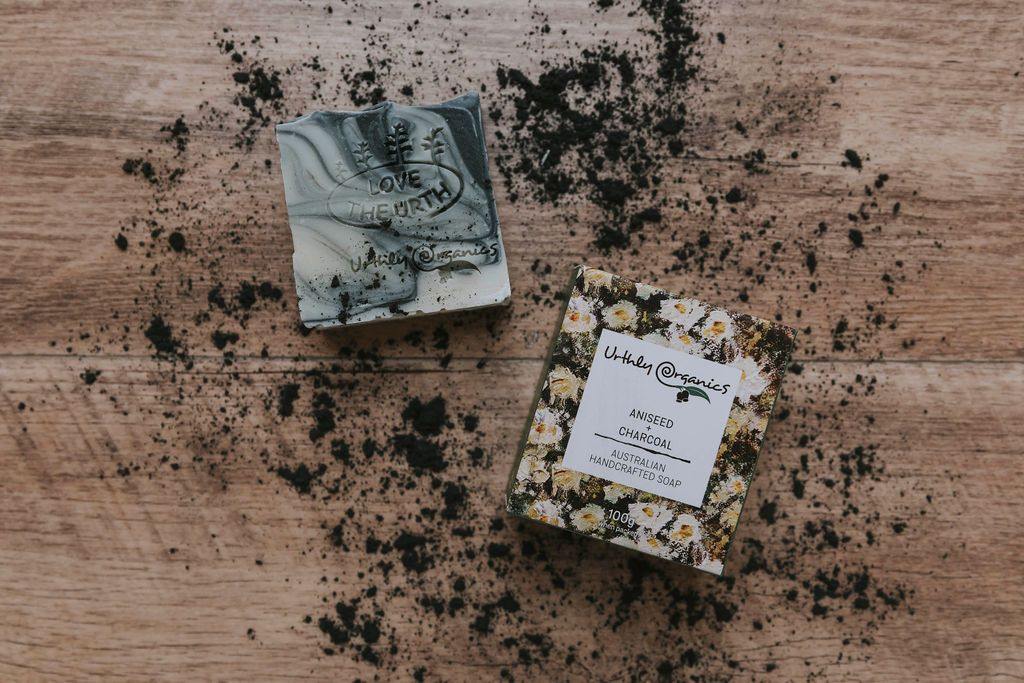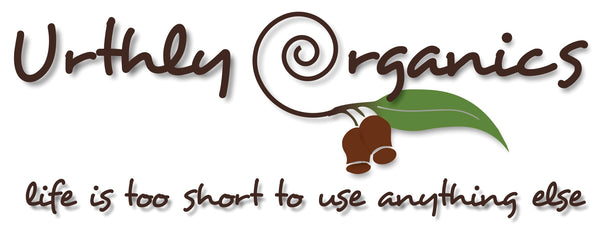
5 Ways to Save your Soap
Share
This is an ongoing series part of our Shelf Secrets blog. Within this series, the blogs aim to share ideas towards ensuring you make the most out of your handcrafted products. Improving the longevity of your skincare by reducing unnecessary wastage, and also saving you money.
We’ve all been there before
You get a brand-new skincare product, only to have it for one or two uses till it’s gone. Some has melted away, it’s stuck in the packaging, or you used heaps to get the intended effect. For many, this happens with handmade soaps. When browsing through reviews, Urthly Organics and our competitors receive shelf life as the biggest issue or question about soap.
Generally speaking, handmade soap should last longer than commercial soap. However, longevity varies from the product, location, and lifestyle of the user. Heat, light, moisture, and storage also impact the duration of your soap. This makes longevity to be determined on the user. In many cases, there is always one more thing someone can do to improve the life of their soap.
To help you get better use from your handmade soaps, here are some of our key tips to keep your soap going strong for longer:

Keep Moisture Away
Handmade Soap is hydrophilic[1], meaning that the product attracts moisture. However, the product also contains hydrophobic molecules to separate the dirt and grease from the skin when cleaning as they repel water[2] . This is why it is moisturizing to the skin while cleaning. However, the hydrophilic aspects of a soap bar impact the amount of use you will receive.
Handmade soap can often form ‘goo’ (otherwise known as ‘slime’ to those who hate the feel). This residue is created by moisture from the soap’s surroundings and often becomes a wasted product. To reduce the loss of your soap, it’s important to keep the moisture away when you are not using the product.
One important step after use is to drain your soap. By elevating the soap and allowing excess moisture to escape, the product will dry (how much varies on humidity) and reduce the amount of product becoming liquid goop.
Our soap drainers suit this purpose. We have three options:
Handmade in Bendigo with cotton thread, the pouches drain, and dry soap bars to improve the life of use. They are also a good solution to travel.
Handmade in Bendigo from recycled wooden pallets, these pre-oiled dishes provide the elevation and channels to allow for water to run out.
Made in New Zealand, the Block Dock is a good drainer for the shower. It has a suction cup to be placed on upright surfaces, allowing the moister to fall out the bottom.

Store with Clothing
As mentioned earlier, water, sunlight, humidity, and heat reduce a soap bar's longevity. Handcrafted soap bars are similar to wine or fine cheese, requiring a cool, dry, and dark place to keep the product. Storing soap in open or humid environments can cause the soap to oxidize, turning the product moldy, rancid, or short-lasting over time[6].
Storing a soap bar in your clothing draws or cupboards is an excellent place. The greater the space taken up by clothing, the better. Your clothes will smell lovely, while your soaps are less likely to become soft from moisture. This is especially nice with strong-smelling soap bars, such as Aniseed and Charcoal[7], Kaffir Lime and Patchouli[8], or Cinnamon and Orange[9].
*One note that is worth mentioning regarding storage is the scent. The longer a soap is stored, the fainter the smell. However, typically, the shelf life should not be impacted.

Cut your Soap
When using a bar of soap, the surface area (exposed surface)[10] reacts to the water, dirt, and grease. This causes erosion of the surface until there is nothing left. In plain terms, the bigger the soap, the more product that is used up and exposed to moisture.
Reducing the size of your soap block is a great way to increase the life of your product. Look at how much you need and cut a soap accordingly. For example, for an overnight trip away, you may only require a small 3 x 3cm square piece. Or cut the soap in half for more frequent usage. Make sure to store the leftovers till needed.
In most cases, handcrafted soap can be cut with a butter knife. Soaps with a higher salt content may be crumblier. However, the soap should cut. Urthly Organics has some pre-cut smaller options available with Vegan[11] or Non-Vegan[12] Favourites Boxes.

Collect the Slithers
Getting to the last little bit of soap can be annoying. However, these scraps are completely usable. Drain and save the last fragments of your soap bar. The collection will slowly grow until you have a few slithers.
Then all you have to do is put them together. When you decide you have enough, lightly wet the scraps, pushing them together to create a ‘Frankensoap’. This soap bar can additionally be shaped to your liking. Once finished, the new Frankensoap can be used like any regular soap bar and saves the precious product from being wasted.
Alternatively, our Crocheted Soap Pouches[13] are a good way to store and use your slithers. They drain soap after use and can also be used as an applier of soap. Saving your time merging the soap scraps.

Choose a soap for your lifestyle
Handmade soaps vary in scent, ingredients, and feel. To increase the usage of your soap bars, it’s about determining what soap suits you best. This process may take some research and trial to complete. However, the benefit is worth the search.
Determining the perfect soap block is like working out what skincare or haircare product is best for you. For example, if you are located in a tropical environment, avoid castile soap bars, and opt for a mixed oil-based product. However, if you are located in a hot and dry environment, Castile soap may be a perfect option.
If you are unsure where to start when trying to find the perfect fit, ask. At Urthly Organics, the soap bars attempt to cater to a variety of needs and lifestyles. Hopefully, information has been useful and benefits the longevity of your soap bars.

References
[1] Biology Dictionary, 2017, ‘Hydrophilic’: https://biologydictionary.net/hydrophilic/
[2] NESTA, 2011, ‘Soap- how does it get things clean?’, Planet Science: http://www.planet-science.com/categories/under-11s/chemistry-chaos/2011/06/soap---how-does-it-get-things-clean.aspx#:~:text=Normally%2C%20oil%20and%20water%20don,love%20water%20%2D%20they%20are%20hydrophilic.
[3] Urthly Organics, crocheted soap pouch
[4] Urthly Organics, reclaimed soap dish
[5] Urthly Organics, block dock
[6] Durant, C., 2013, ‘Shelf Life for Handmade Soap’, Nova Studio: https://thenovastudio.com/shelf-life-for-handmade-soap/#:~:text=There's%20no%20set%20shelf%20life,last%20longer%20in%20the%20shower.
[7] Urthly Organics, aniseed and charcoal soap
[8] Urthly Organics, kaffir lime and patchouli soap
[9] Urthly Organics, cinnamon and orange soap
[10] No Brain Too Small, ‘Surface Area to Volume Ratio’: https://www.nobraintoosmall.co.nz/students/biology/NCEA_Level2/pdfs/bio2_91156_satovolume.pdf
[11] Urthly Organics, vegan favourites box
[12] Urthly Organics, non-vegan favourites box
[13] See footnote 4
